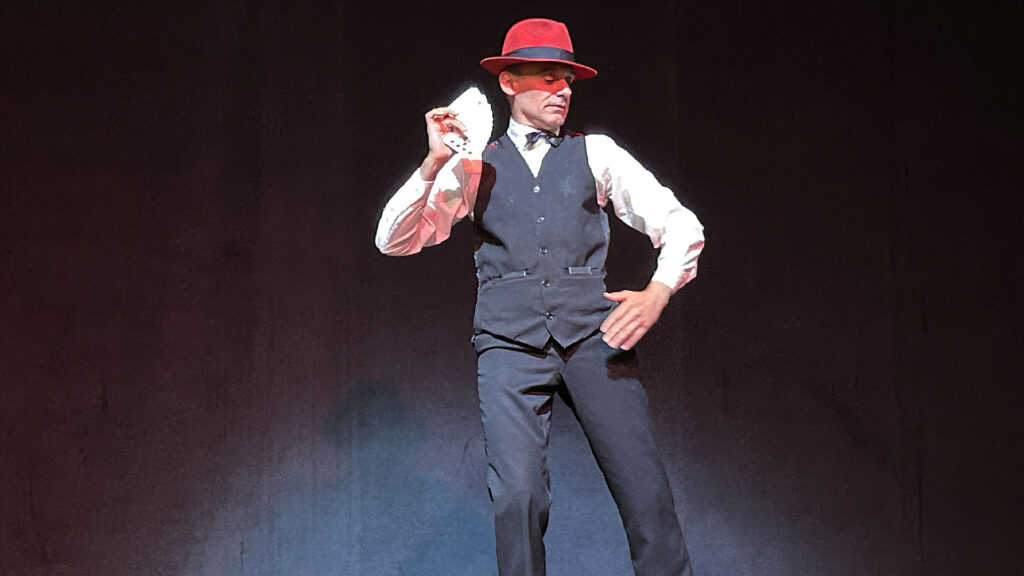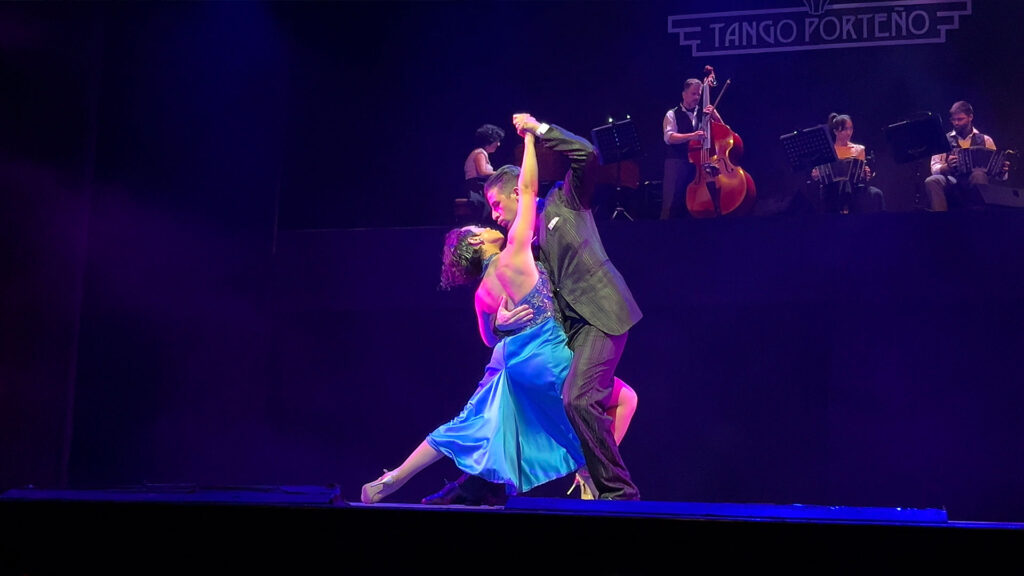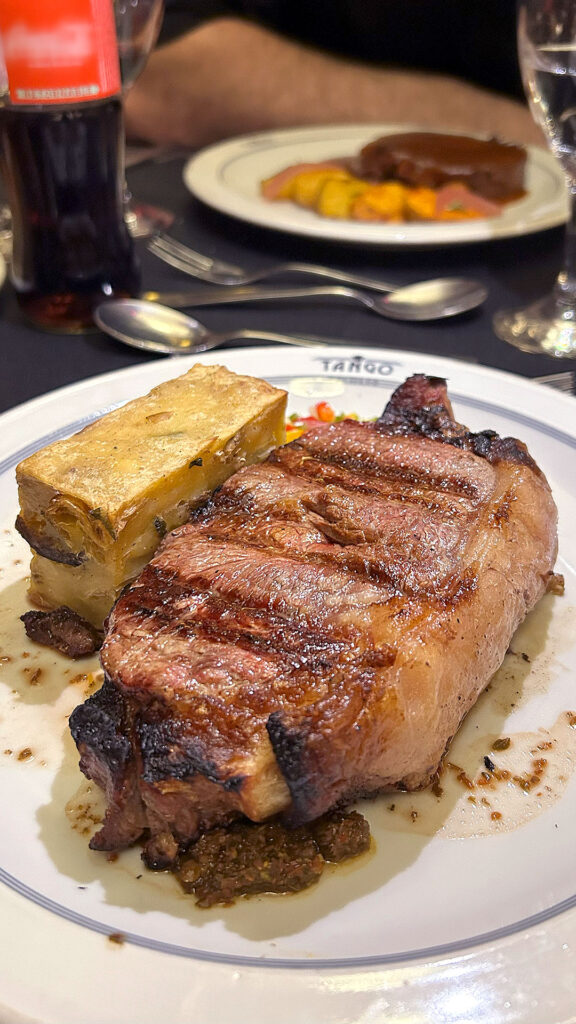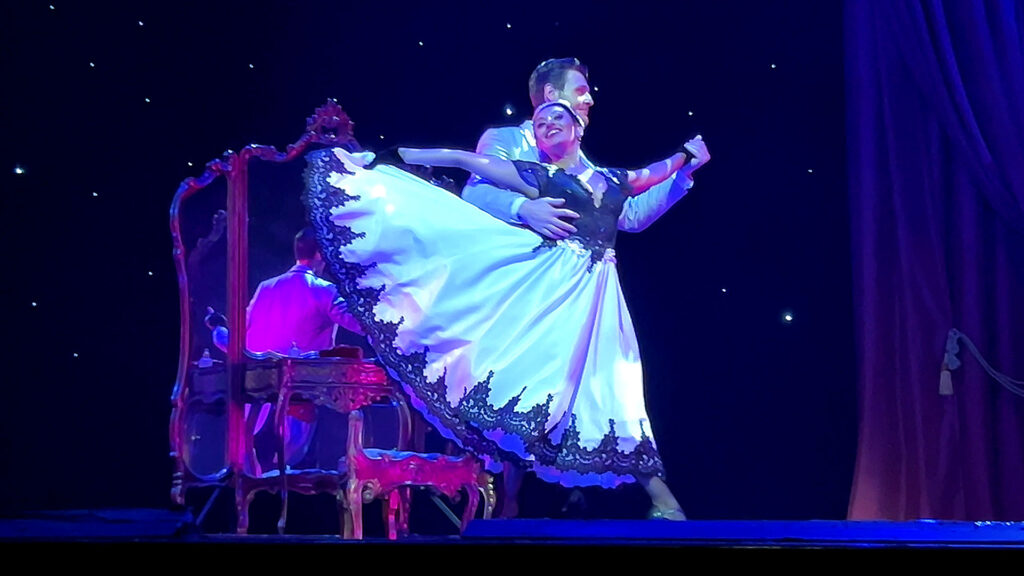Movement. Sensuality. Intensity. All this makes Argentine tango a dance worthy of the cinema. Scent of a Woman proves it. As does Moulin Rouge! Shall We Dance. True Lies. Chicago. Frida. Carlos Gardel’s films, and so on. Of the many shows of this type we’ve enjoyed in Buenos Aires, perhaps none mixes the passion of tango with the magic of cinema quite like Tango Porteño.

In the Heart of Microcentro
Likewise, you’d be hard pressed to find a production with a better name or location, not only for referencing a Gardel song. In Argentina, they call Buenos Aires residents “porteños” or “port folk” due to the city’s historical relevance as a seaport. Therefore, “tango porteño” represents all the tango in the capital.
On the other hand, a large part of the tango dinner shows in Buenos Aires gravitate toward the La Boca neighborhood, the birthplace of tango. However, none more than Tango Porteño can allude to being in the very heart of the city, between the Obelisco on Corrientes Avenue and the Teatro Colón.

Cinema Roots
Even the headquarters of Tango Porteño enriches its cinema connection. Since 1956, the building served as the Cine Metro, one of the city’s most prestigious movie theaters, founded by the Hollywood studio Metro-Goldwyn-Mayer, no less. Belgian architect Alberto Bourdon designed the original theater, which was later remodeled in 1984 by Carlos Casano, Alfredo Zubillaga and Juan Poli.
Cine Metro witnessed many prestigious film releases, but unfortunately could not compete with the rise of multiplexes. After some attempts to keep it afloat, its doors closed permanently in December 2005.
Spanish hotel chain NH acquired the property to launch the NH Buenos Aires Tango hotel, while a private group recovered the theater. Architects Augusto Penedo and Juan Martín Urgell headed both projects.
Arrival at Tango Porteño

Tango Porteño’s venue still maintains Cine Metro’s classic features, such as the art deco details, the Bordeaux-colored curtain and the illuminated marquee. All the old projections areas have been consolidated into a single multi-level space. These details prompt you to prepare for a majestic experience.
Doors open at 8:30 at night. We were welcomed inside, directed to the ticket office and then over to our tables. The large dining area reminded us of the Moulin Rouge theater in Paris, France. Our waiter served us wine and took our dinner order based on our selected meal plan.

Traditional Menu
There are five dinner options and a lunch plan available at Tango Porteño, all of which differ in table location and menu. They include hotel shuttles, an entree, a main course dish, dessert, and an open bar throughout the show. You can book an additional tango class at your convenience.
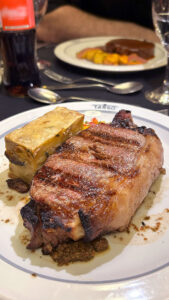
Like other dinner shows, Tango Porteño’s dishes reflect Argentine cuisine. Traditional options include empanadas, bife de chorizo (Argentine steak), pork bondiola, pastas, and dulce-de-leche-based desserts. All menu options are named after iconic city neighborhoods such as San Telmo, Caballito, Barracas, and Almagro.
We recommend the Argentine steak, the knife-cut veal empanadas, and the chocolate mousse with cognac, orange cream and dulce de leche. You can also request vegetarian and gluten-free options.

Curtains Up

The fun starts before you finish dinner. A spotlight focuses on a bumbling waiter on the floor and directs him to a table in the middle of the stage. Once there, he starts obsessing with a red hat that prompts him to dance and perform playing card magic.
After the scene he begins his own show, which alludes to tango’s Golden Decade of the 1940s. The segments document the nightlife in Caminito, people in the parks, ballroom dancing, and downtown residents. They achieve this without LED backdrops or projections, simply using traditional scenery and props.
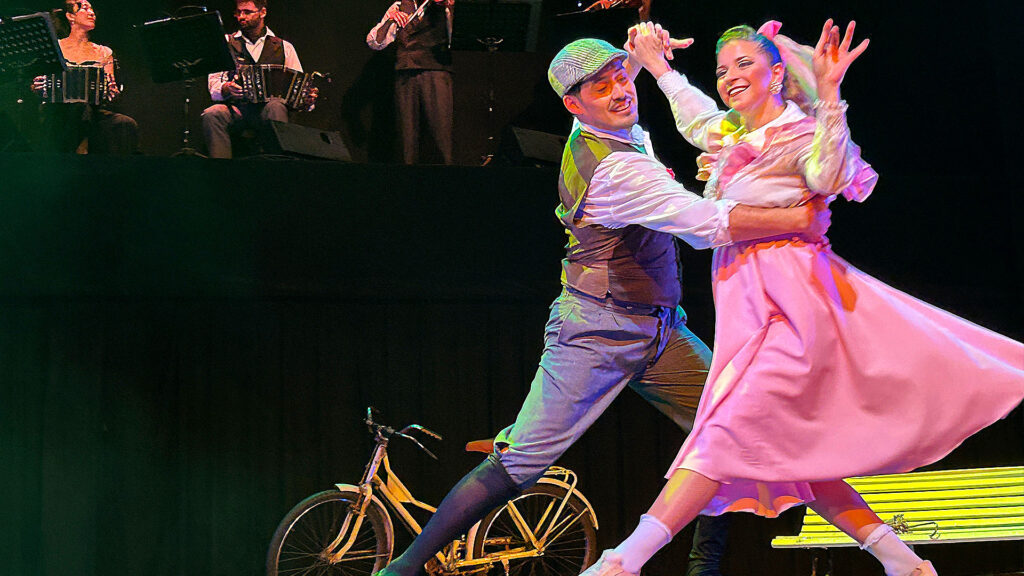
Marked Difference
The costumes and choreography are top notch level. Yet where Tango Porteño shows its cinematic vein is in how each vignette plays out like a silent film short. Apart from the singer who occasionally intervenes, artists on stage emote with their gestures and movements, without saying a word.

We were also caught off guard by a feeling we had during Tango Porteño. All of our favorite tango shows are intense and passionate, but this one also projects an air of innocence. A park scene tells a story of young love, while another mixes tango and waltz as a sort of fairy tale. Even the most “sensual” and “dangerous” presentations like the malambo share this feeling.
Another highlight for us was how prominent they made Tango Porteño musical band, which resided on an elevated strip behind the stage. The sextet played for almost the entire show, several times without dancers onstage. They were even given a wardrobe change!

Final Thoughts
Golden Age movie and theater marquees promised something to passersby on the street. “Step right up and be entertained. At the very least you’ll have a good time, but maybe, just maybe, we’ll change your life.” Tango Porteño’s marquee keeps that promise of yesteryear, while the show more than fulfills it.
Where to Find It
Av. Cerrito 570, San Nicolás, Buenos Aires, Argentina
+54 11 4124-9400
www.tangoporteno.com.ar
Video
Gallery




